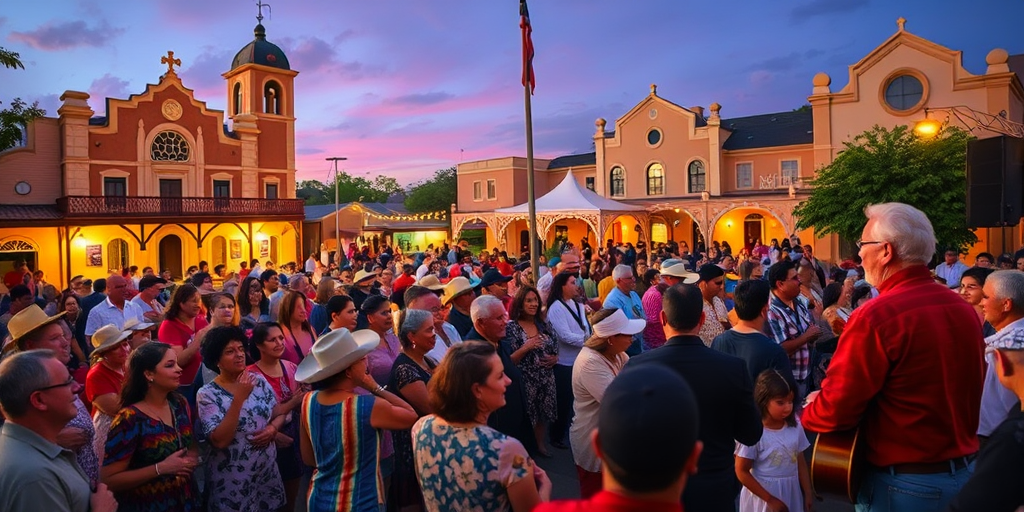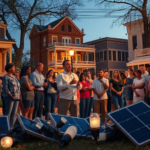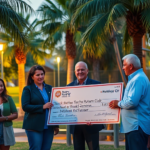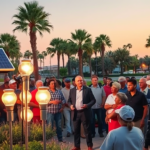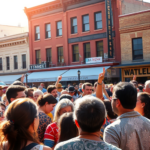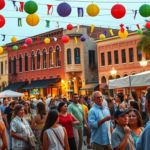Museum Earns Statewide Recognition and Hosts Successful Cultural Event
In a triumphant week for local cultural heritage, the Texas Conjunto Music Hall of Fame & Museum (TCMHFM) in San Benito secured a prestigious spot among the top 10 music museums in Texas and hosted a vibrant Texas Folklife event, emphasizing its pivotal role in South Texas’ cultural landscape.
Acknowledging Cultural Significance
Receiving recognition from the UTSA Institute of Texan Cultures, TCMHFM has been hailed as a must-visit destination for those interested in the rich tradition of conjunto music. This accolade highlights the museum’s dedication to preserving and promoting this unique genre that is integral to the Rio Grande Valley (RGV) and broader Texas music scene. TCMHFM Executive Director Patricia Avila shared her excitement over the recognition. “Receiving this honor is a testament to our community’s effort and love for our musical heritage,” she says, adding that it reaffirms their mission to educate and inspire Valley residents and visitors alike.
Founded in 2001 by the late visionary Reynaldo Avila Sr., the museum originally began on Heywood Street and relocated to the historic Azteca building in 2022. This move bolstered its status as a regional hub for celebrating conjunto music’s contributions and legacies.
Embracing Tradition Through the Texas Folklife Apprentice Program
The museum not only celebrates its achievements but also continues to host events that foster cultural vibrancy. Most recently, TCMHFM opened its doors to the renowned Texas Folklife’s Apprentice Program. As a part of this initiative, artist mentors receive funding to train apprentices, ensuring that traditional arts continue to thrive across Texas.
The event reached an emotional peak with a standout performance by Pedro Avila, a 57-year-old who tackled the complexity of the button accordion under the guidance of mentor Zeth Seven Lara. Their efforts culminated in an inspiring display of perseverance and skill, serving as a testament to both the program’s success and the communal support from the region. “Music here is more than just sound; it’s history, identity, and heart,” Lara expressed after the performance, highlighting the dual roles of educator and learner as essential to the program’s unique challenges and rewards.
Impact on the Rio Grande Valley Community
These accomplishments have immense significance for the Valley community. By celebrating regional music and facilitating cultural programs, the museum acts as a steward of RGV history and a promoter of its future. This cultural preservation reinforces community pride, foster economic benefits through tourism, and brings attention to the Valley’s vibrant creative arts.
Furthermore, the museum’s role in education and tradition preservation ensures the continuation of ensemble cultural identity. “These events remind us of our roots and showcase emerging talents who will carry forth this legacy,” says local educator and museum volunteer Maria Rodriguez. She believes engaging youth in these programs establishes a long-lasting appreciation for local traditions and history.
Looking to the Future
The museum’s next big event, the annual induction ceremony and dance, is scheduled for July 26, 2025. This highly anticipated evening promises to further cement TCMHFM’s impact on conjunto music’s cultural narrative. Part of this ongoing celebration involves sparking younger generations’ interest in carrying on musical and cultural traditions, fostering both future artists and informed audiences.
TCMHFM’s recognition and activities echo broader themes within recent local news, echoing community diligence and resilience. Contemporary efforts in other sectors illustrate a vibrant San Benito, where cultural and infrastructural initiatives (like the recent infrastructure workshops mentioned in local news) coexist with these artistic pursuits to enhance public life.
Interested parties can contact Executive Director Patricia Avila at (956) 245-5005 for event details and volunteer opportunities.
Addressing Broader Challenges and Opportunities
Though the museum thrives, continued local involvement and support remain critical. Challenges such as funding, reaching broader audiences, and integrating modern preservation technology often test community resources. Balancing these factors requires long-term planning and cooperation among local officials and residents, echoing the proactive approaches seen in regional development projects.
In conclusion, the celebration at TCMHFM is not merely about past accomplishments but a call to action for sustaining the enduring vibrancy of the Rio Grande Valley. As these efforts galvanize support for cultural retention and rejuvenation, the museum becomes a powerful example of how local cultural custodianship can invigorate communities in the RGV and beyond.

